371 Bloor Street West
Toronto, ON M5S 2R7 get directions
Toronto, ON M5S 2R7 get directions

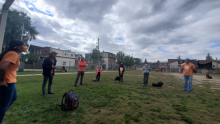
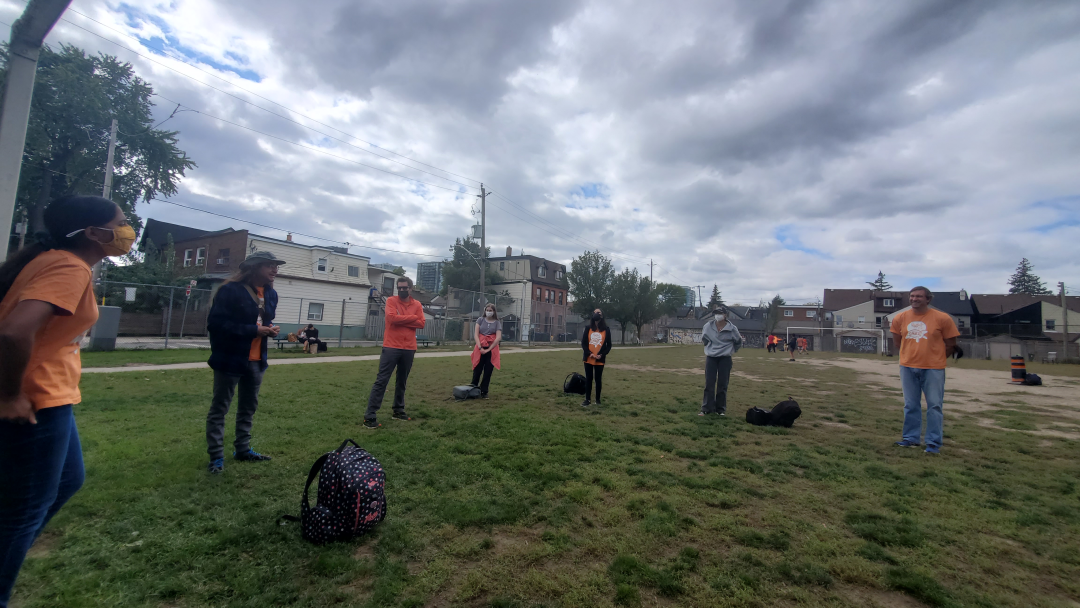 S5 (Grade 11) student Shreya Shah (left) takes part in a talking circle with UTS Elder-in-Residence Cat Criger (second from left) and others on Canada's first National Day of Truth and Reconciliation.
S5 (Grade 11) student Shreya Shah (left) takes part in a talking circle with UTS Elder-in-Residence Cat Criger (second from left) and others on Canada's first National Day of Truth and Reconciliation.
On September 30, University of Toronto Schools was awash in orange as students marked the inaugural National Day of Truth and Reconciliation in Canada to honour the lost children and the survivors of our country's residential schools, their families, and their communities.
However at UTS, Truth and Reconciliation isn’t just a day honoured once a year, but an integrated part of the school program with the goal of graduating students who deeply understand the issues, and can even help further the cause of Truth and Reconciliation in our country. Increasingly, as outlined by the Truth and Reconciliation Commision’s Calls to Action on education, Truth and Reconciliation lies in what we teach, and how we teach it. It’s also the basis of a year-long learning theme for F1 (Grade 7) students that sets the stage for their entire UTS experience by grounding them in these vital issues. It’s embedded in our community with the presence of UTS Elder-in-Residence Cat Criger as a resource to students and teachers alike. It’s also after school, with passionate students and staff on the school’s Indigenous Solidarity Committee, integral to our community as we grappled with the horrifying news of unmarked graves of residential school students at sites across the country earlier this year.
“The more I learn, the more I care,” says S5 (Grade 11) student Shreya Shah, one of the student leaders on the Committee (pictured left). “In Canada right now, there are Indigenous lands illegally being occupied by Canadians, according to our own laws. There are Indigenous communities without clean water, when clean water is recognized as a basic human right by the United Nations. There are more Indigenous children in the child welfare system currently than we've had in residential schools. I've gone to Indigenous events and heard survivor testimony. These are people's lives and rights being violated and I don’t understand how people don’t care? I care because this matters.”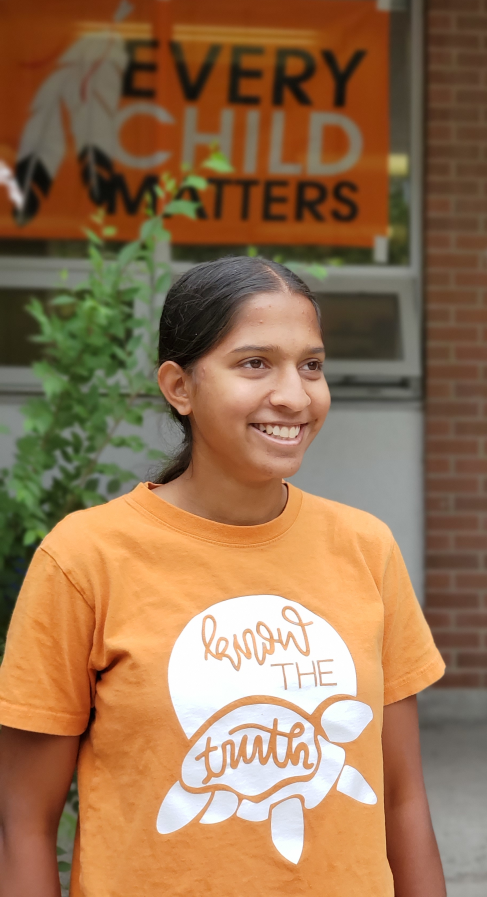
When Shreya came to UTS, she was aware of water quality issues facing Indigenous communities but not much else. She took part in the school’s year-long Truth and Reconciliation learning theme for F1 (Grade 7) students, joined the UTS Indigenous Solidarity Committee, started going to conferences, and by her M3 (Grade 9) year, she was an impassioned activist for Indigenous rights, and the unofficial leader of the Committee.
This year, she and students on the Indigenous Solidarity Committee, along with staff supervisors UTS English teacher James Campbell and French teacher Negar Shayan, created a week of events leading up to the first National Day of Truth and Reconciliation in Canada. On Friday, September 25, the Truth and Reconciliation Commission’s Calls to Action were printed on orange paper and posted around the school. Also posted were question prompts for reflection, such as “How might the lasting impact of residential schools affect Indigenous populations today?” and “How have you personally gotten involved?” along with QR codes for more information.
For the entire week of the event, there were PA announcements every morning and video playing in the halls of the Truth and Reconciliation Commission’s Calls to Action. At lunch, there were screenings of the Tim Wolochatiuk film We Were Children. On the actual day, an entire student assembly was dedicated to the cause, with a Land Acknowledgement by UTS Elder-in-Residence Cat Criger. At the heart of it was Shreya interviewing Dorothy Stewart, an elder of the Cree Nation of Wemindji and the host of Winschgaoug, the Cree-language radio morning show on CBC North. She is also the wife of Jeff Kennedy, who retired from his longtime role as the UTS Director of Athletics earlier this year.
Like Phyllis (Jack) Webstad, the Indigenous girl who never had the chance to wear her new shirt and for which Orange Shirt Day was named, Dorothy also went to residential school in a brand new dress, stockings and shoes, that were taken from her, only to be returned a year later, far too small. “I could never wear them again,” she told UTS students.
She had a braid halfway down her back and one day, they cut it off. At the end of the school year, they sent it home with her to her mom, who became very upset. “It was a slap in the face to my mother, but also as the saying goes, ‘to take the Indian out of the child,’ but I never lost it. My spirit was always there.” She told the school how abuse touched the lives of her family members, and how each year she imagines how her niece’s life might have been, if she had lived instead of becoming one of hundreds of murdered and missing Indigenous women and girls in our country. Despite it all, Dorothy’s Cree language is strong, and when she looks in the mirror and sees her dark skin and the image of her mother, she says she is proud of what she looks like, because her mother was beautiful.
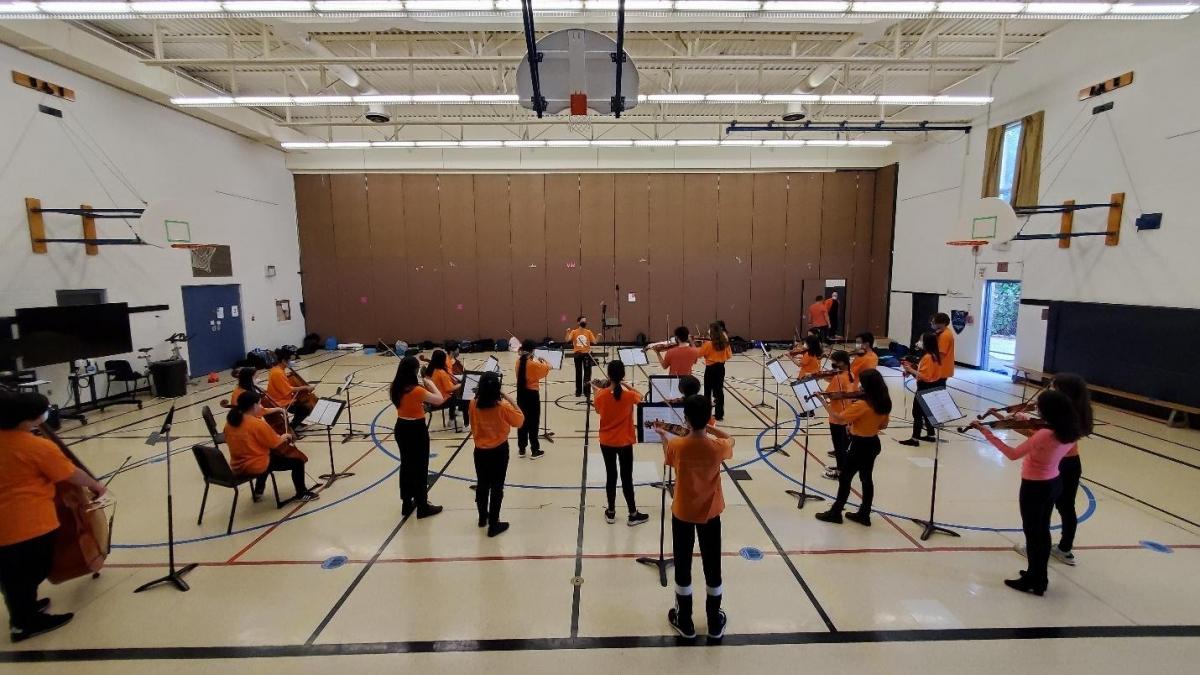
The assembly continued with the Chamber Strings Ensemble performing Missing by Cree composer and cellist Cris Derksen, under the direction of Sarah Shugarman, the UTS Expressive Arts Coordinator and a Music teacher. A challenge to reflection and to action was delivered by members of the Indigenous Solidarity Committee: S5 (Grade 11) Serena Suleman, and M3s (Grade 9s) Aditya Raman and Argane Goel, urging students to take time to contemplate and share their thoughts via a survey, and also to drive the conversation forward by sharing what they’ve taken away from the day with someone beyond the school community. There was also an outdoors talking circle with UTS Elder-in-Residence Cat Criger, and F1 (Grade 7) students took part in a solidarity walk around the local community, raising awareness at the local level.
“The day itself was given a lot more time and attention at UTS and the classes were talking about this,” says Shreya. “It was huge and really, really good to see it get the attention it deserves.”
For this school year, the Committee’s plans are still developing, but will focus around Treaty Week in November, and the Strawberry Ceremony on February 14, which Shreya is hoping F1 students will be able to attend in person again. A recent success is the three-part UTS student podcast produced with the UTS Gender Equity Committee, featuring founder Audrey Huntley and elder Wanda Whitebird discussing their work with the No More Silence organization, and the Strawberry Ceremony at Toronto police headquarters on February 14, which honours missing and murdered Indigenous women and girls.
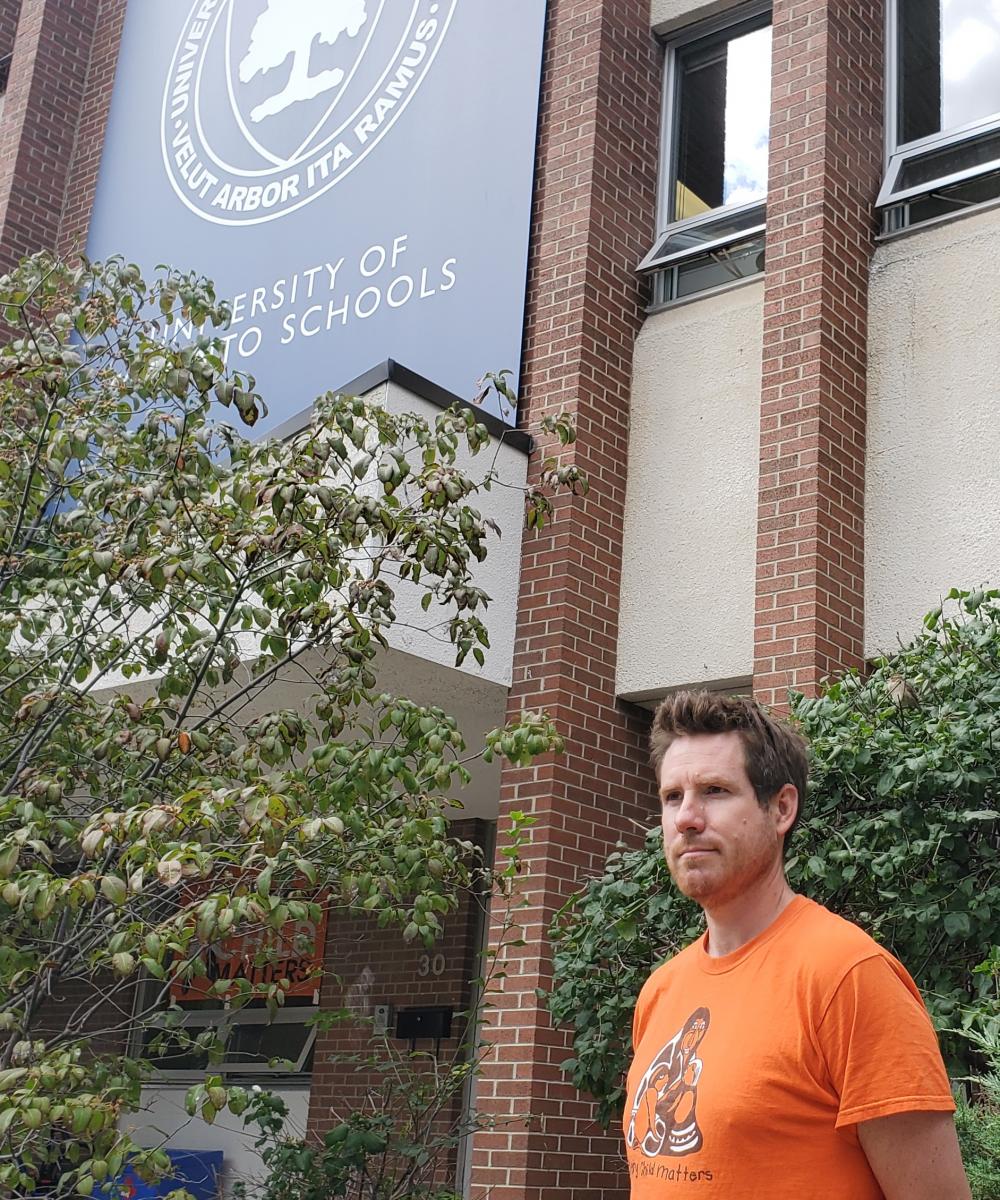
UTS has been making progress on evolving the curriculum to include Indigenous perspectives and teaching methods that honour the Truth and Reconciliation Commission’s Calls to Action, particularly Actions 62 to 65 that focus on education, a commitment UTS made in 2015 under the leadership of Principal Rosemary Evans. Now, Head of Academics Marc Brims (pictured left) says the focus has become reconciliACTION – what concrete actions can we take to further reconciliation?
“As we learn more, the truths of our past are becoming more informative and getting deeper into our curriculum and learning processes,” says Marc. “We’re building capacity at this school, one conversation at a time.”
The process is guided by UTS Elder-in-Residence Cat Criger, who serves as a resource for teachers and students, as well as on the Indigenous Solidarity Committee, working out of a dedicated room at 30 Humbert that was transformed by students into an Indigenous space.
“There is great importance placed on underscoring the role of UTS students as future leaders who can support and implement the Truth and Reconciliation Commission’s Calls to Action, by helping them learn the true history and how to honour the inherent rights of Indigenous peoples,” says Cat.
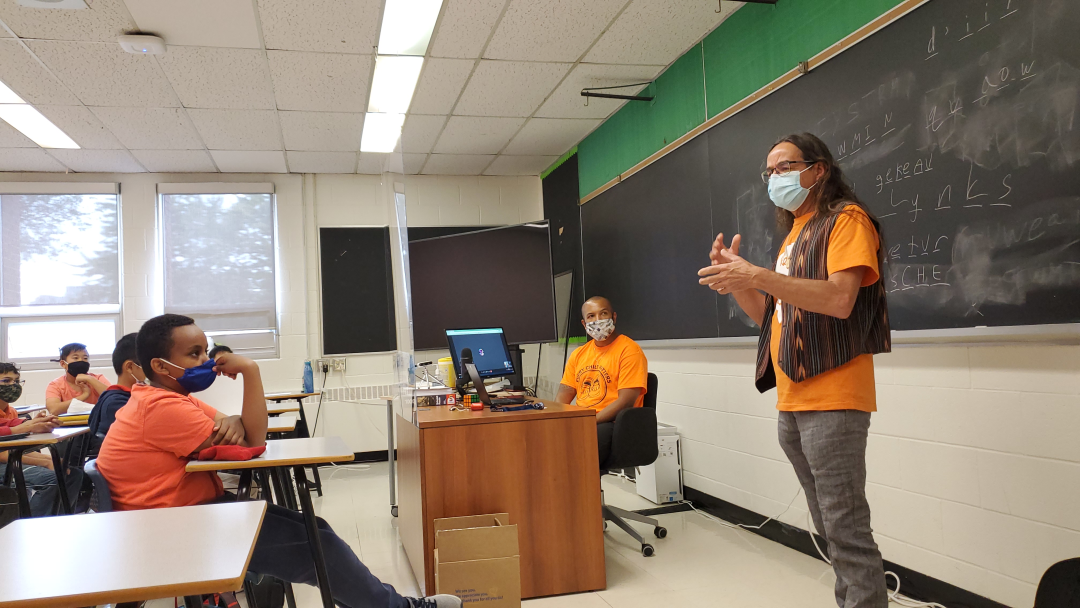
UTS Elder-in-Residence Cat Criger joined an F1 (Grade 7) Health and Physical Education class for a discussion around Truth and Reconciliation on September 30.
Recently retired from his role as Indigenous Advisor at the University of Toronto Mississauga Campus, Cat also worked on all three U of T campuses as an advisor, lecturer and sessional instructor. Now he consults and makes regular appearances in UTS classes to help make the lessons more authentic.
“The teaching itself sometimes is conducted just like fireside chats, a conversation between myself as the teacher with the students,” says Cat. Last school year, he visited Vince Dannetta’s Philosophy class to explore the ethics of care, community and morality and discuss COVID-19 vaccinations from an Indigenous perspective. He shared Indigenous perspective in astronomy with Isabella Liu’s F2 (Grade 8) Science class and there are many other examples.
The curriculum continues to evolve. For Dr. Maureen McCarthy’s History class at UTS, Truth and Reconciliation learning means seeking out Indigenous perspectives on past events like Confederation. It’s no longer about what happened but also what was missing: the Indigenous peoples who were not consulted.
German and French Teacher Nicola Townend completed her 2017 Masters of Art in Education thesis at the U.K.’s Bishop Grosseteste University on how to integrate Indigenous perspectives and cultures into German-language teaching, and now applies what she learned to her German class at UTS. A discussion of German street names pivots to Toronto street names and their Indigenous origins, and a unit on German fairytales ties in First Nations traditions of oral storytelling. Nicola also shares her expertise by leading workshops for other educators at the University of Toronto, and at conferences for teachers and education administrators in Canada and the U.S.
Shreya says, “There have been leaps and bounds of progress. I think we can always do better, but there's a lot more conversation around these issues within the classroom now.”
The emphasis is on experiential learning. For the F1 (Grade 7) year-long learning theme, students bear witness firsthand to the grim truths of Canada’s residential school legacy. Last year, due to the pandemic, students attended a virtual tour of the Mohawk Institute Residential School, and heard testimonials from residential school survivors. Students also typically pass down their learning at the end of the year to new F1 (Grade 7) students to UTS via a letter reflecting on their experience, guided by the question: “What does reconciliation mean to me?”
Education is key, especially for young people, says Shreya, because it’s tangible. The other big actions she recommends are donating your time, money and energy to the cause, and getting active politically. “Non-Indigenous citizens have potential to create a lot of change within our institutions, by emailing your Member of Parliament or speaking out about issues and advocating for change. We’ve got to learn more so we can break free of our biases.”
As part of the UTS Strategic Initiatives on Anti-Racism, Equity, Diversity and Inclusion, the school has embarked on outreach programs to Indigenous organizations and communities, with the aim of recruiting Indigenous students to attend our school, as part of a larger initiative to enhance the overall diversity of UTS students.
